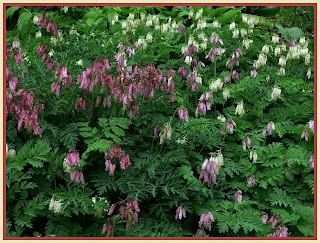12° here on the mountain this morning with a slight wind and a flock of goldfinches cleaning out the feeders. Ice fishermen continue to head to the pond while locals head in the opposite direction for Saturday morning recycling and shopping. Life is good!
A couple days ago Gail stopped in Wells River with a friend for lunch. They had just come from the nursing home where Gail's only remaining uncle, age 93, is now a resident. Lunch was a little late but the local pharmacy, called just that--The Pharmacy--offers a nice lunch. Vermont provides surprises as you don't always know where you can find good food but often it's in places you would never look. The Cabot Hardware Store has a good lunch too, but again--pharmacy--hardware store--who would think to go there?
As Gail exited the pharmacy, a woman was looking towards the car. "Does your husband write a blog?" she inquired. That started the conversation between Gail and new found friend, Janis Moore of TailGait Farm in Wells River. Janis raises and markets grass fed, free range, naturally raised beef including Herefords, Angus and a breed I wasn't familiar with named Simmentals. Janis had seen the URL decal on Gail's car window, was familiar with this blog and made the inquiry.


Years ago I had Tina from The Sign Depot in St Johnsbury make me a vinyl sign for Gail's car and then had a couple made for my trucks. Back then they were $25 each but the point is a little sign like this draws more attention to your business than you might think. I'm sure the price has probably gone up a little since I bought ours as the Toyota is now a 2004 and the truck has been replaced again but what I'm saying is this is a very good business investment that always conjures up a discussion . I had Tina's Dad make the 16 foot sign for our building roof and this summer I have a couple more I want made.
Gail didn't mention if Janis had a sign on her car or truck but the brief conversation was a good one and I was happy to hear that someone else reads my thoughts and enjoys hearing about gardening in Vermont. Hope you do too!
Writing from the moutain above Peacham Pond where the sun really never came out and where snow is now falling lightly. Blue jays have replaced the finches.
George Africa
The Vermont Gardener
Social Networking Works!©
On Facebook as Vermont Flower Farm and Gardens and also as George Africa
On Twitter as vtflowerfarm


































